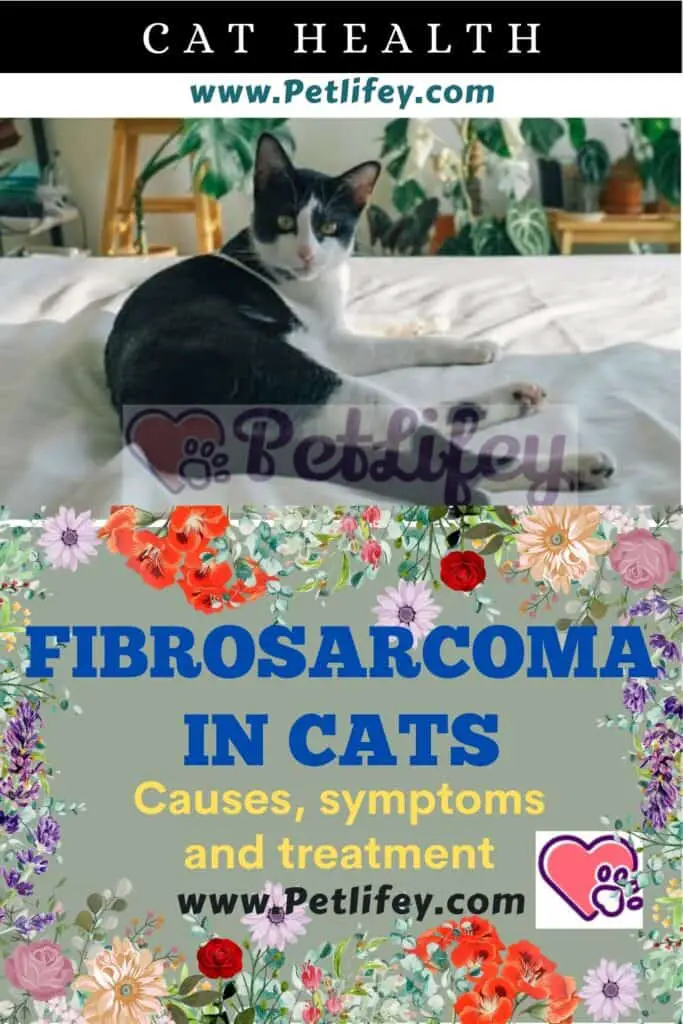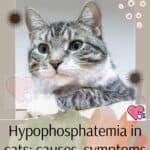
Fibrosarcoma in cats is a very common malignancy in these animals. Let’s see what the causes, symptoms and treatment are.
Fibrosarcoma in cats generally occurs around 8 years of age, even if the cat shows no signs of intolerance or pain.
Initially, fibrosarcoma in cats appears as a small ball, which is a subcutaneous nodule that moves to the touch and does not generate pain.
This is why very often the problem is underestimated but subtly the lump continues to grow, until it becomes large enough and penetrates into the surrounding and even deep tissue planes. This type of feline tumors are very aggressive, infiltrative and relapsing.
Causes of fibrosarcoma in cats
Initially, as a cause of fibrosarcoma in cats, it was thought of injecting vaccines, such as that for FeLV (Feline Leukemia Virus – Feline Leukemia Virus).
Subsequently, more recent studies have failed to demonstrate a link between immunizing prophylaxis and the development of fibrosarcoma.
But regardless of whether it is a vaccine or any other drug, some studies have confirmed that many cases of fibrosarcoma can develop following a sting, or even conditioned by the number of injections that are given to that part of the body.
It is therefore a consequence of the chronic inflammatory process generated by the reaction of the tissue at the point of the bites.
It should be emphasized that these are hypotheses and not certainties and with a very low incidence. Furthermore, the risk of contracting diseases against which the cat must be vaccinated is much higher than the risk that the feline can develop this type of tumor.
This type of tumor that grows rapidly, while being very visible, does not produce metastases but only expands to the surrounding tissue.
Symptoms
As we have previously said, this type of tumor does not generate any initial discomfort to the cat, nor pain.
This even very often involves neglecting the thing and not investigating how it should be done.
The symptoms that instead manifest themselves later when the fibrosarcoma in the cat becomes evident and bulky, can be the following:
- swelling on the cat’s skin;
- nodules (near areas where injections are given).
Faced with these obvious signs, we must not wait for the evolution of the already quite worrying manifestations, but we must immediately accompany the cat to the vet.
Diagnosis and treatment of fibrosarcoma in cats

In order to make a correct diagnosis, the veterinarian, with the help of the cat’s owner, will have to know the animal’s medical history, check the vaccination booklet and know the drugs that the cat has taken or is taking.
He will then perform a cytological examination and biopsy of the lump. Of course, everything will happen with adequate anesthesia of the animal, as it would be impossible to intervene with the conscious animal.
Once the diagnosis has been established, the veterinarian will intervene with the treatment which consists first of all of the surgical intervention to remove the mass and the surrounding tissue to avoid the recurrence of the tumor in the cat.
It is very important to diagnose the disease early, as in this way the intervention will be less aggressive. Surgery is generally not a solution to be applied alone.
Immediately after the surgery and a minimum of hospitalization for the animal, the veterinarian will prescribe painkillers (especially after surgery) and appropriate chemotherapy, together with treatment with immunomodulatory and anti-inflammatory drugs .
The use of chemotherapy for the treatment of fibrosarcoma in cats is considered to be quite effective, as the soft tissues are very sensitive to this type of therapy.
We also remind you that in case of doubtful situations it is always advisable to contact the veterinarian who will know what to advise us and how to intervene.
The only thing we can do as a prevention is to always keep our pet’s body under control.
Perhaps with the excuse of a lot of pampering and attention, pass your hand over the whole body of the cat, even on a daily basis.
This analysis is appropriate to be able to take into account any changes or the appearance of nodules that were not there before.






